- Home
- Louis L'Amour
Sacketts 00 - The Sackett Companion (v5.0) Page 9
Sacketts 00 - The Sackett Companion (v5.0) Read online
Page 9
Jem Mace often fought men we would classify as heavyweights or light-heavyweights today. He fought under the London Prize-Ring rules which meant a knockdown was the end of a round. The term “knockdown” was loosely interpreted and meant any time a man went to the ground. It was perfectly permissible to throw a man down or trip him. A round might be ten minutes or it might be ten seconds, ending whenever a fighter went down.
Present-day fights are fought, as they have been for many years, under the Marquis of Queensbury Rules, and a round is three minutes, the rest between rounds one minute.
CULLEN BAKER: My novel THE FIRST FAST DRAW deals with him. To some he was a hero, to others an outlaw and a killer. What you believe often depends on your source of information. His activities were largely confined to the area around Jefferson, Texarkana, the Sulphur River area, and Caddo Lake, yet there are stories that he went west as far as Salt Lake and even that he was associated for a time with Brigham Young’s so-called Destroying Angels.
He was, as in this story, associated for a time with Bill Longley and Bob Lee. Longley was only briefly associated with Baker and was later hanged. Bob Lee was a Southerner who continued to wage war after the surrender to Grant. A man of good family, he was also a good man with a gun. The title of his story comes from the fact that until the 1850s the pistols generally available were too cumbersome for a fast draw and were seldom carried on the person.
GOVERNOR EDMUND JACKSON DAVIS: A Reconstruction governor in a state needing no reconstruction, as the war had done no damage there. An honest, decent man in a very unpopular job, a Republican governor in Texas, a largely Democratic state. His black police force was extremely unpopular. Most of the better class of black men would have nothing to do with the police force and those recruited often invited trouble in a situation that demanded the utmost in tact and consideration. During the last days of the Civil War and for at least ten years after there was much feuding and fighting among the white population as the various factions tried to settle their difficulties by direct action.
The Davis police got very little cooperation, and in any event were incapable of coping with it. Davis was defeated in his bid for re-election but refused to give up the office until assured he would get no support from President Grant.
FRANKLYN DECKROW: A man of pride but in all the wrong things. A planner and a conniver, but a man of whom to beware. He would destroy a man, not with a gun but with ink, usually red ink.
MARSHA DECKROW: His daughter, and a niece of Jonas Locklear. Very pretty, but pretty is as pretty does, as they used to say in the mountains and elsewhere.
JONAS LOCKLEAR: A former ship’s captain who came up the hard way; a tough man but a just one. Franklyn Deckrow believed him gone for good, which left Deckrow in charge, but Jonas returned. For how long?
LILY ANNE DECKROW: Sister to Jonas, wife to Franklyn Deckrow; a lovely but unhappy woman.
VIRGINIA LOCKLEAR: Called Gin; a woman of intelligence and courage with much of her brother’s strength and vitality. A beautiful, seductive woman who could ride as well as any vaquero. A very cool lady, indeed.
JEAN LAFITTE: A pirate, smuggler, slave dealer and patriot, owner with his brother, Pierre, of a blacksmith shop (where the work was done by slaves) in New Orleans. This shop became a center for plotting and piratical activities. The brothers LaFitte seemed to have a hand in much that was taking place and owned shares in several privateers operating out of New Orleans or their bases at Galveston or Barataria. At one time they were engaged in a plot to seize Texas.
Believed born in 1781 in Bayonne, France, Jean later moved to an island in the Caribbean. After revolts there, the family moved on to New Orleans.
There is a story that a British agent tried to bribe him to show them the secret route through the bayous from the Gulf to New Orleans used by the smugglers. The offer was said to have been made in the Old Absinthe House (which still exists) and that Jean LaFitte was offered a handful of gold. His reply was to pin the hand to the bar with a dagger. True or not, the story is typical of many told about LaFitte. During the Battle of New Orleans, when the city was attacked by the British, LaFitte supplied artillery and gunners for the defense, and thus was a major factor in the United States winning the Battle of New Orleans.
ERIC STOUTEN: Killed by the Kurbishaws; he knew the location of the treasure. A seaman and fisherman in the past, Stouten came to Mexico as a cavalryman in the command of Captain Elam Kurbishaw, but he had visited Mexico before.
JEFFERSON: In Marion County, Texas. Built along Big Cypress Bayou. It was for a time the principal port of Texas and a prosperous city. A number of the old homes and other buildings still exist from those earlier years when Jefferson was a booming town with what seemed a glowing future. The destruction of the Red River Raft lowered the water and killed the town as a major seaport. The construction of the railroad to Texarkana was the final blow. Jefferson remains a pleasant town, well worth a visit.
SAN AUGUSTINE: Site of a mission found in 1716. Philip Nolan held horses there when making a gather for the Louisiana troops. At that time corrals and a cabin were constructed. The town of San Augustine developed on the site and some fine old mansions remain. These towns in northeast Texas are more “southern” in nature than what is usually considered western.
JUAN CORTINA: Born in Mexico on May 16, 1824. Owner of considerable property on both sides of the border, Cortina was a natural leader and a champion of the rights of his people. On the Texas side of the Rio Grande, his main ranch was at Santa Rita near Brownsville. Considered a bandit by some, he acquired stock where he found it, driving cattle across the Rio Grande on many occasions. He was indicted on at least one occasion but never brought to trial. On another occasion he captured the town of Brownsville after the local marshal had beaten a Mexican prisoner, and took the prisoner from the marshal.
Several forces were sent against him, some including Mexicans of Texas ancestry, but he defeated these attempts until he was himself defeated in a battle fought near Rio Grande City. His activities continued on both sides of the border where he had friends among the Anglos as well as the Mexicans. On another occasion his troops were routed by Major John S. Ford of the Texas Rangers. Finally, Colonel Robert E. Lee was appointed commandant of the district with instructions to pursue into Mexico if necessary.
Cortina remained a power in the area south of the border for many years and was acting governor of Tamaulipas under Benito Juarez. He continued some of his extra-legal activities until his own government intervened and he was removed to Mexico City. He died there in 1894, certainly one of the most interesting and exciting personalities along the border. Although he was never known to hesitate in appropriating any loose cattle, horses or mules, there was little he would not do for a friend, an abused Mexican, or anyone who appealed to his sense of justice or gallantry. Known to his intimates as Cheno.
MAJOR L.H. McNELLY: Captain of the Texas Rangers, soldier in the Civil War, and farmer. He was a quiet man, slender of build, and soft-voiced. He served with the hated Davis police for a time but seems to have emerged from that experience a man respected and trusted insofar as his own activities were concerned. Later, with the Texas Rangers, he proved to be one of their most able commanders, although weakened by tuberculosis.
BEEVILLE: Settled by Irish immigrants in the 1830s, it was for a time a wild town with many gamblers, much footracing, horseracing, and such. Ed Singleton, a notorious outlaw, was hanged there in 1877. It is said he left his skin to the local law officers to be stretched over a drumhead, the drum to be beaten on each anniversary of his death as a warning to others who might wish to follow in his footsteps.
OAKVILLE: For a number of years this quiet little town was the hang-out for a number of outlaws and would-be outlaws, and the scene of several gun battles, a place where law officers were unwelcome. Capt. L.H. McNelly finally moved in and cleaned the place up in 1876. There, as elsewhere in the West, the outlaws and their women usually kept to their own si
de of town and their own places of resort, interfering very little with the schools and churches around which the town’s social life revolved.
MANUEL: A boy who loved a mule, and who went away to ride it in races.
DOC HALLORAN: Occasional horse trader; a long, thin man with thin reddish hair. His kind was to be found in every western town, and that is still the case.
BALD KNOBBERS: A group of vigilantes around Forsyth, Missouri, they were originally organized to cope with a growing crime problem, but at the request of state authorities, the responsible citizens withdrew. The group was then taken over by a bunch of ruffians who were responsible for attacks upon squatters, tie-cutters, and various others until, in 1887, the citizens arose, hanged three of them, and arrested two dozen others. Some escaped to carry on their criminal activities in a more comfortable climate. The name “Bald Knobbers” was given them because of their meetings on Bald Jess, a summit overlooking Forsyth. Several former members of the group became well-known further west, but the term was often applied to others from Missouri or Arkansas who had no connection with the original group.
THE HENRY RIFLE: Perfected by B. Tyler Henry, a .44 calibre repeating rifle produced at the old Volcanic plant in New Haven, Connecticut. Aside from the Spencer, it was the only successful repeating rifle on the market in the United States. It was the forerunner of the Winchester, which was developed from the Henry in the late 1860s.
The Henry appeared during the Civil War and a few of the rifles saw service in that conflict, although its distribution was limited at first. It carried fifteen shots in a magazine tube under the barrel.
OTHER WEAPONS: During the period immediately before and following the Civil War, many kinds of guns appeared on the frontier. For a time almost any pistol was called a “Colt,” almost any rifle a “Winchester.” The two types became so common that the brand names became synonyms for those types of weapons.
The men who came west often brought with them the weapons they had used during the war. A frontiersman himself, Lincoln knew a man could scarcely exist or keep his family alive without a horse and a rifle, so the discharged Confederates were allowed to keep their weapons.
The men and women who came west were from a variety of backgrounds and so the weapons they brought with them varied too. The Hawken, the Sharps, Spencer, Henry, and Winchester were all well-known, and the Ballard as well, but at least fifty other types of rifles might be found on the frontier, and as many pistols. These included: the Le Mat, a pistol with two barrels, one firing a .36 caliber shell, the other a shotgun shell; the Dancer; Whitney; Griswold & Gunnison; Spiller & Burr; Merwin & Hurlburt; and many another. Some men in the West bought weapons there but many inherited them from older members of the family or from friends.
Many varieties of derringers (named after Henry Derringer) were produced, and pistols combined with knuckle-dusters or knives were common. There were canes as well as umbrellas that carried gun barrels.
However, next to the Colt, the most popular pistol was the Remington. Smith & Wesson won a contract to supply 250,000 pistols for the Russian Army after the Grand Duke Alexis saw what Buffalo Bill Cody could do with one. That kept them from supplying many guns to the western market.
Colt revolving rifles and shotguns were also generally available. My great-grandfather was carrying the former when killed by the Sioux in Dakota. Those who knew him said he was seldom known to miss his target.
WALCH NAVY: A pistol firing twelve shots; there was also a Walch that fired ten shots. Yet these were not exceptional, for pistols were made at the time capable of firing eighteen or twenty shots. I have not heard of one of these on the frontier but everything else wound up there, so why not?
ORLANDO SACKETT: A son of Falcon Sackett and Aleyne Kurbishaw, he was five feet ten inches in height and usually weighed about one-hundred eighty pounds, but was unusually strong. This was partly a matter of heritage, but even more due to the very hard work he did as a boy and young man. He grew up, like most of the Sacketts, in the mountain country of Tennessee, where a major part of their living depended on their hunting and trapping ability.
Among their neighbors were the Cherokee Indians, and a bit further away the Choctaw, Chickasaw, Creek, and Seminole Indians. The Sacketts hunted with the Indians, shared a part of their lives, and learned much from them.
He also appears in THE SACKETT BRAND.
MOJAVE CROSSING
First publication: Bantam Books paperback, July 1964
Narrator: William Tell Sackett
Time Period: c. 1875–1879
In which William Tell Sackett meets a beautiful woman. It so happens he is carrying thirty pounds of gold. Is the meeting coincidence? Even a young man raised in the mountains can begin to wonder, especially when the woman convinces him he should guide her to Los Angeles, across the desert.
Tell knows a lot about the desert but how much does he know about women? Or can one woman make him forget what he knows?
HARDYVILLE: Near the present site of Bullhead City and Davis Dam, not far from the site of the old Katherine Mine where this writer put in several months underground, and near the area where Johannes crossed the Colorado in my book THE LONESOME GODS.
Hardyville was for many years the head of navigation on the Colorado. Steamboats from Yuma came up the river and occasionally, when the water was high, continued on to Callville, now under the waters of Lake Mead. Hardyville was the creation of William Hardy, who established a trading post, saloon and other structures at that point on the river. He helped build the road east to Beale Springs (now Kingman) and thence to Prescott and Fort Whipple.
For a number of years the Beale Road was constantly under attack by small parties of Indians. Through the 1860s there were continual reports of attacks along the road, and a number were killed on both sides.
CALLVILLE: Now buried under the waters of Lake Mead, this was the final possible port on the Colorado, but could only be reached when the season was right. This station was founded and held by Jacob Hamblin, a well-known Mormon pioneer who explored much of the region north of the Colorado. Born at Salem, Ohio in 1819, he emigrated to Utah in 1850, and devoted himself to establishing and maintaining peace between the Indian and the white man. In his areas he succeeded very well. Hamblin, for a time missionary to the Hopi, investigated the area of Bluff, Utah in 1879.
TRELAWNEY GIRLS: They lived in the mountains from which the Sacketts came and, like the Sacketts, were a very special breed. Wild, beautiful girls who occasionally left the mountains for the “Settlements,” they were as expert with rifles as most mountain men, and needed protection from no one.
DEAD MOUNTAINS: On the Colorado; a small, very rugged range, and not as dead as they at first appear.
BEALE: A former Naval officer from whom Beale Springs was named. He carried the news of the gold discovery to Washington, D.C., and some of the gold. The news had reached Washington before his arrival, but the gold itself was most convincing. Beale also advocated the use of camels in western transportation and some were imported, along with camel drivers. The experiment was written off as unsuccessful despite the loads the camels could carry, but much of this was because the soldiers simply did not like them (there’s not much to love about a camel!) and they frightened the horses, causing runaways and stampedes. One argument given was that the sharp rocks in our deserts cut their feet, though it may not have been realized that many Asiatic and African deserts are similar to ours.
However, other camels were imported and were used to transport salt from Walker Lake to Austin, in Nevada, for some time. By and large, though, westerners did not take to them and the effort petered out. Some of the camel drivers became quite well known in their own way. Hadji Ali, known in the West as Hi Jolly, was a favorite character. And it was at the home of Greek George, another camel driver, that Tiburcio Vasquez, the famous California outlaw, was captured.
SECRET PASS: An abandoned stage route west of Kingman to the Colorado and beyond. Winding throug
h a maze of rock formations, it offered unique opportunities for ambush.
SECRET SPRING: A spring of good water near the old stage line.
SACRAMENTO WASH: The valley west of Kingman that lies between the Cerbat and the Black Mountains. The road crossed by Union Pass, slightly changed from the old route, possibly because of a somewhat embarrassing rock formation. Close by the old route lay the old Frisco and Arabian mines, now forgotten except by history.
PIUTE OR PAH-UTE SPRING: A desert watering place about twenty-two miles west of the Colorado. In the early days there was good grass on the hills to the right of the spring and a patch of grass below the spring. This was a station on the old Government Road (also referred to in my novel CALLAGHEN) and a small fort was built there. Usually four soldiers stood guard.
ROCK SPRING: Twenty miles west; usually guarded. A stopping place for mail riders. Considerable grass nearby in those days.
MARL SPRING: Well back in the country now, another station on the old Government Road. The water used to come from tunnels in the hillside; now it issues from a pipe and is used by cattlemen. It is twenty miles further west. Remains of the small fort can be found. In July of 1866 a small band of Piutes attacked the last wagon of a small train and killed a teamster named Leonard Taylor, shot him through with arrows. The other teamsters opened fire and drove off the attackers.
Such attacks took place at intervals all along the old Government Road from San Bernardino to Prescott.
DORINDA ROBISEAU: A traveling lady of wit and nerve. As Tell Sackett said. “When I saw the black-eyed woman a-looking at me I wished I had a Bible.”
COOK’S WELL: East of the Providence Mountains in the Mojave Desert. Off any known trail when I was last there, but a few miles southeast of the Old Domingo Ranch. Flowed into a trough built for range cattle.

 Novel 1987 - The Haunted Mesa (v5.0)
Novel 1987 - The Haunted Mesa (v5.0) The Haunted Mesa (Louis L'Amour's Lost Treasures)
The Haunted Mesa (Louis L'Amour's Lost Treasures) The Walking Drum (Louis L'Amour's Lost Treasures)
The Walking Drum (Louis L'Amour's Lost Treasures) Fallon (Louis L'Amour's Lost Treasures)
Fallon (Louis L'Amour's Lost Treasures)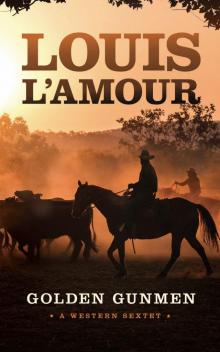 Golden Gunmen
Golden Gunmen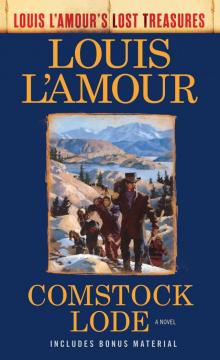 Comstock Lode
Comstock Lode The Lonesome Gods (Louis L'Amour's Lost Treasures)
The Lonesome Gods (Louis L'Amour's Lost Treasures) No Traveller Returns (Lost Treasures)
No Traveller Returns (Lost Treasures) Yondering: Stories
Yondering: Stories The Strong Land
The Strong Land Reilly's Luck (Louis L'Amour's Lost Treasures)
Reilly's Luck (Louis L'Amour's Lost Treasures) The Man Called Noon (Louis L'Amour's Lost Treasures)
The Man Called Noon (Louis L'Amour's Lost Treasures) Draw Straight
Draw Straight Last of the Breed (Louis L'Amour's Lost Treasures)
Last of the Breed (Louis L'Amour's Lost Treasures) Taggart (Louis L'Amour's Lost Treasures)
Taggart (Louis L'Amour's Lost Treasures) The Hopalong Cassidy Novels 4-Book Bundle
The Hopalong Cassidy Novels 4-Book Bundle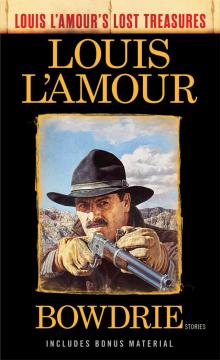 Bowdrie_Louis L'Amour's Lost Treasures
Bowdrie_Louis L'Amour's Lost Treasures Reilly's Luck
Reilly's Luck The Ferguson Rifle (Louis L'Amour's Lost Treasures)
The Ferguson Rifle (Louis L'Amour's Lost Treasures) Sacketts 00 - The Sackett Companion (v5.0)
Sacketts 00 - The Sackett Companion (v5.0) The Chick Bowdrie Short Stories Bundle
The Chick Bowdrie Short Stories Bundle Novel 1974 - The Californios (v5.0)
Novel 1974 - The Californios (v5.0)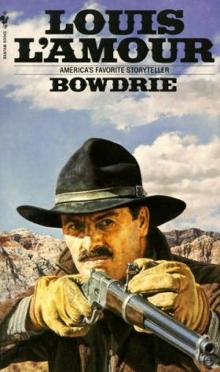 Collection 1983 - Bowdrie (v5.0)
Collection 1983 - Bowdrie (v5.0) Novel 1984 - The Walking Drum (v5.0)
Novel 1984 - The Walking Drum (v5.0) Over on the Dry Side
Over on the Dry Side The Walking Drum
The Walking Drum Novel 1963 - Catlow (v5.0)
Novel 1963 - Catlow (v5.0)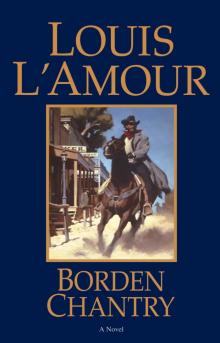 Borden Chantry
Borden Chantry Collection 1983 - Law Of The Desert Born (v5.0)
Collection 1983 - Law Of The Desert Born (v5.0) Ghost Towns
Ghost Towns Jubal Sackett (1985) s-4
Jubal Sackett (1985) s-4 Novel 1953 - Showdown At Yellow Butte
Novel 1953 - Showdown At Yellow Butte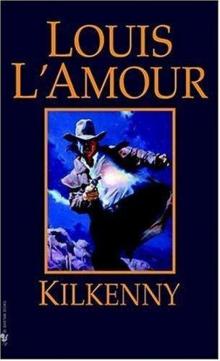 Kilkenny 03 - Kilkenny (v5.0)
Kilkenny 03 - Kilkenny (v5.0)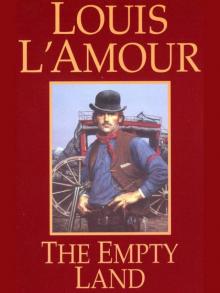 Novel 1969 - The Empty Land (v5.0)
Novel 1969 - The Empty Land (v5.0) Matagorda
Matagorda The First Fast Draw
The First Fast Draw Novel 1950 - Westward The Tide (v5.0)
Novel 1950 - Westward The Tide (v5.0) Ride the Dark Trail s-18
Ride the Dark Trail s-18 Novel 1963 - Fallon (v5.0)
Novel 1963 - Fallon (v5.0) Novel 1964 - Kiowa Trail (v5.0)
Novel 1964 - Kiowa Trail (v5.0) Kilkenny
Kilkenny Riders of the Dawn
Riders of the Dawn Sackett (1961) s-9
Sackett (1961) s-9 Fallon
Fallon Ride the River (1983) s-5
Ride the River (1983) s-5 Mojave Crossing s-11
Mojave Crossing s-11 Novel 1958 - Radigan (v5.0)
Novel 1958 - Radigan (v5.0) The Collected Short Stories of Louis L'Amour, Volume Five
The Collected Short Stories of Louis L'Amour, Volume Five Novel 1953 - Showdown At Yellow Butte (v5.0)
Novel 1953 - Showdown At Yellow Butte (v5.0) Collection 1980 - Yondering
Collection 1980 - Yondering Novel 1957 - Last Stand At Papago Wells (v5.0)
Novel 1957 - Last Stand At Papago Wells (v5.0) North To The Rails
North To The Rails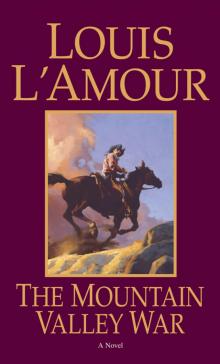 The Kilkenny Series Bundle
The Kilkenny Series Bundle Novel 1972 - Callaghen (v5.0)
Novel 1972 - Callaghen (v5.0) Novel 1970 - Reilly's Luck (v5.0)
Novel 1970 - Reilly's Luck (v5.0)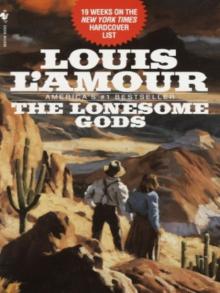 The Lonesome Gods
The Lonesome Gods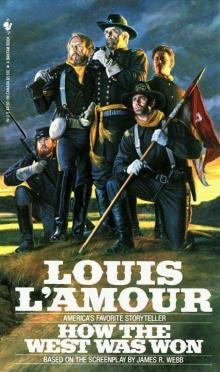 Novel 1963 - How The West Was Won (v5.0)
Novel 1963 - How The West Was Won (v5.0) Collection 2001 - May There Be A Road (v5.0)
Collection 2001 - May There Be A Road (v5.0) Flint
Flint Novel 1968 - Chancy (v5.0)
Novel 1968 - Chancy (v5.0) Volume 1: Unfinished Manuscripts, Mysterious Stories, and Lost Notes from One of the World's Most Popular Novelists
Volume 1: Unfinished Manuscripts, Mysterious Stories, and Lost Notes from One of the World's Most Popular Novelists Novel 1962 - High Lonesome (v5.0)
Novel 1962 - High Lonesome (v5.0) Fair Blows the Wind (Louis L'Amour's Lost Treasures)
Fair Blows the Wind (Louis L'Amour's Lost Treasures) Lando s-8
Lando s-8 The High Graders
The High Graders Collection 1986 - Night Over The Solomons (v5.0)
Collection 1986 - Night Over The Solomons (v5.0) The Collected Short Stories of Louis L'Amour, Volume 3
The Collected Short Stories of Louis L'Amour, Volume 3 Collection 1980 - Yondering (v5.0)
Collection 1980 - Yondering (v5.0) Showdown
Showdown The Quick And The Dead
The Quick And The Dead Novel 1968 - Down The Long Hills (v5.0)
Novel 1968 - Down The Long Hills (v5.0) The Lonely Men s-14
The Lonely Men s-14 Bowdrie (Louis L'Amour's Lost Treasures)
Bowdrie (Louis L'Amour's Lost Treasures) Treasure Mountain s-17
Treasure Mountain s-17 Novel 1959 - Taggart (V5.0)
Novel 1959 - Taggart (V5.0)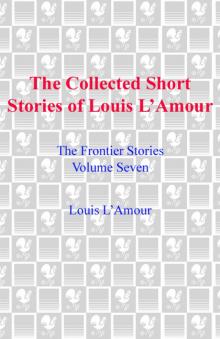 The Collected Short Stories of Louis L'Amour, Volume 7
The Collected Short Stories of Louis L'Amour, Volume 7 Novel 1957 - The Tall Stranger (v5.0)
Novel 1957 - The Tall Stranger (v5.0) Novel 1978 - The Proving Trail (v5.0)
Novel 1978 - The Proving Trail (v5.0) Callaghen (Louis L'Amour's Lost Treasures)
Callaghen (Louis L'Amour's Lost Treasures) Sitka
Sitka Collection 1988 - Lonigan (v5.0)
Collection 1988 - Lonigan (v5.0) The Californios
The Californios Novel 1966 - The Broken Gun (v5.0)
Novel 1966 - The Broken Gun (v5.0)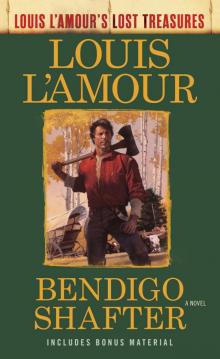 Bendigo Shafter (Louis L'Amour's Lost Treasures)
Bendigo Shafter (Louis L'Amour's Lost Treasures) Novel 1979 - The Iron Marshall (v5.0)
Novel 1979 - The Iron Marshall (v5.0)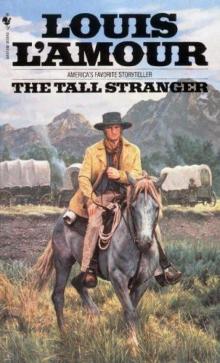 Novel 1957 - The Tall Stranger
Novel 1957 - The Tall Stranger Novel 1965 - The Key-Lock Man (v5.0)
Novel 1965 - The Key-Lock Man (v5.0) Collection 1986 - Dutchman's Flat (v5.0)
Collection 1986 - Dutchman's Flat (v5.0) Lonely On the Mountain s-19
Lonely On the Mountain s-19 Sackett's Land
Sackett's Land The Man Called Noon
The Man Called Noon Hondo (Louis L'Amour's Lost Treasures)
Hondo (Louis L'Amour's Lost Treasures) The Lawless West
The Lawless West The Warrior's Path (1980) s-3
The Warrior's Path (1980) s-3 Novel 1956 - Silver Canyon (v5.0)
Novel 1956 - Silver Canyon (v5.0) The Sky-Liners (1967) s-13
The Sky-Liners (1967) s-13 Mustang Man s-15
Mustang Man s-15 Novel 1971 - Tucker (v5.0)
Novel 1971 - Tucker (v5.0) Off the Mangrove Coast (Louis L'Amour's Lost Treasures)
Off the Mangrove Coast (Louis L'Amour's Lost Treasures) Collection 2005 - Riding For The Brand (v5.0)
Collection 2005 - Riding For The Brand (v5.0) Collection 1986 - The Trail To Crazy Man (v5.0)
Collection 1986 - The Trail To Crazy Man (v5.0) Silver Canyon
Silver Canyon The Man from Battle Flat
The Man from Battle Flat The Daybreakers (1960) s-6
The Daybreakers (1960) s-6 Kid Rodelo (Louis L'Amour's Lost Treasures)
Kid Rodelo (Louis L'Amour's Lost Treasures) Milo Talon
Milo Talon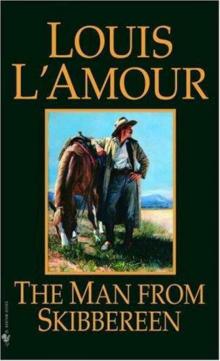 Novel 1973 - The Man From Skibbereen (v5.0)
Novel 1973 - The Man From Skibbereen (v5.0) Novel 1965 - The High Graders (v5.0)
Novel 1965 - The High Graders (v5.0) The Sacket Brand (1965) s-12
The Sacket Brand (1965) s-12 Rivers West
Rivers West Novel 1970 - The Man Called Noon (v5.0)
Novel 1970 - The Man Called Noon (v5.0) Education of a Wandering Man
Education of a Wandering Man The Collected Short Stories of Louis L'Amour, Volume 1
The Collected Short Stories of Louis L'Amour, Volume 1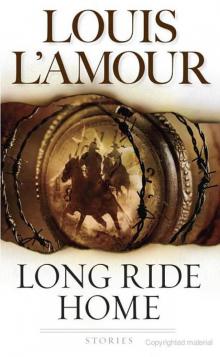 Collection 1989 - Long Ride Home (v5.0)
Collection 1989 - Long Ride Home (v5.0) Callaghen
Callaghen Collection 1999 - Beyond The Great Snow Mountains (v5.0)
Collection 1999 - Beyond The Great Snow Mountains (v5.0) West of the Tularosa
West of the Tularosa End Of the Drive (1997) s-7
End Of the Drive (1997) s-7 Novel 1986 - Last Of The Breed (v5.0)
Novel 1986 - Last Of The Breed (v5.0)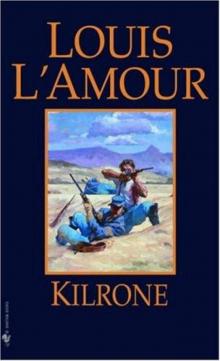 Novel 1966 - Kilrone (v5.0)
Novel 1966 - Kilrone (v5.0) Chancy
Chancy Desert Death-Song
Desert Death-Song Novel 1959 - The First Fast Draw (v5.0)
Novel 1959 - The First Fast Draw (v5.0) Kilkenny 02 - A Man Called Trent (v5.0)
Kilkenny 02 - A Man Called Trent (v5.0) Lost Trails
Lost Trails Novel 1972 - Callaghen
Novel 1972 - Callaghen Novel 1966 - Kid Rodelo (v5.0)
Novel 1966 - Kid Rodelo (v5.0) The Collected Short Stories of Louis L'Amour, Volume 2
The Collected Short Stories of Louis L'Amour, Volume 2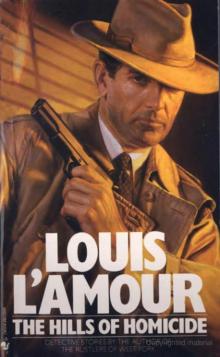 Collection 1983 - The Hills Of Homicide (v5.0)
Collection 1983 - The Hills Of Homicide (v5.0) Novel 1969 - Conagher (v5.0)
Novel 1969 - Conagher (v5.0) Radigan
Radigan High Lonesome
High Lonesome Bendigo Shafter
Bendigo Shafter Novel 1954 - Utah Blaine (As Jim Mayo) (v5.0)
Novel 1954 - Utah Blaine (As Jim Mayo) (v5.0) Collection 1990 - Grub Line Rider (v5.0)
Collection 1990 - Grub Line Rider (v5.0)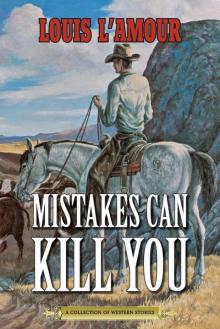 Mistakes Can Kill You
Mistakes Can Kill You The Iron Marshall
The Iron Marshall Novel 1963 - Dark Canyon (v5.0)
Novel 1963 - Dark Canyon (v5.0) Novel 1955 - Heller With A Gun (v5.0)
Novel 1955 - Heller With A Gun (v5.0) Novel 1978 - Bendigo Shafter (v5.0)
Novel 1978 - Bendigo Shafter (v5.0)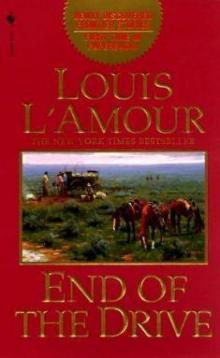 Collection 1997 - End Of The Drive (v5.0)
Collection 1997 - End Of The Drive (v5.0) Fair Blows the Wind
Fair Blows the Wind Talon & Chantry 07 - North To The Rails (v5.0)
Talon & Chantry 07 - North To The Rails (v5.0) The Trail to Crazy Man
The Trail to Crazy Man To the Far Blue Mountains (1976) s-2
To the Far Blue Mountains (1976) s-2 Collection 1981 - Buckskin Run (v5.0)
Collection 1981 - Buckskin Run (v5.0) Collection 2008 - Big Medicine (v5.0)
Collection 2008 - Big Medicine (v5.0) Collection 2003 - From The Listening Hills (v5.0)
Collection 2003 - From The Listening Hills (v5.0)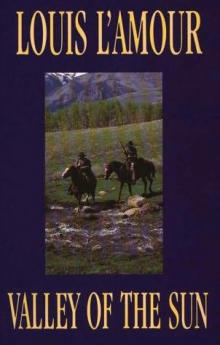 Collection 1995 - Valley Of The Sun (v5.0)
Collection 1995 - Valley Of The Sun (v5.0) Glory Riders
Glory Riders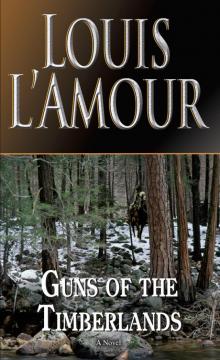 Guns of the Timberlands
Guns of the Timberlands The Collected Short Stories of Louis L'Amour, Volume Four
The Collected Short Stories of Louis L'Amour, Volume Four Novel 1968 - Brionne (v5.0)
Novel 1968 - Brionne (v5.0)